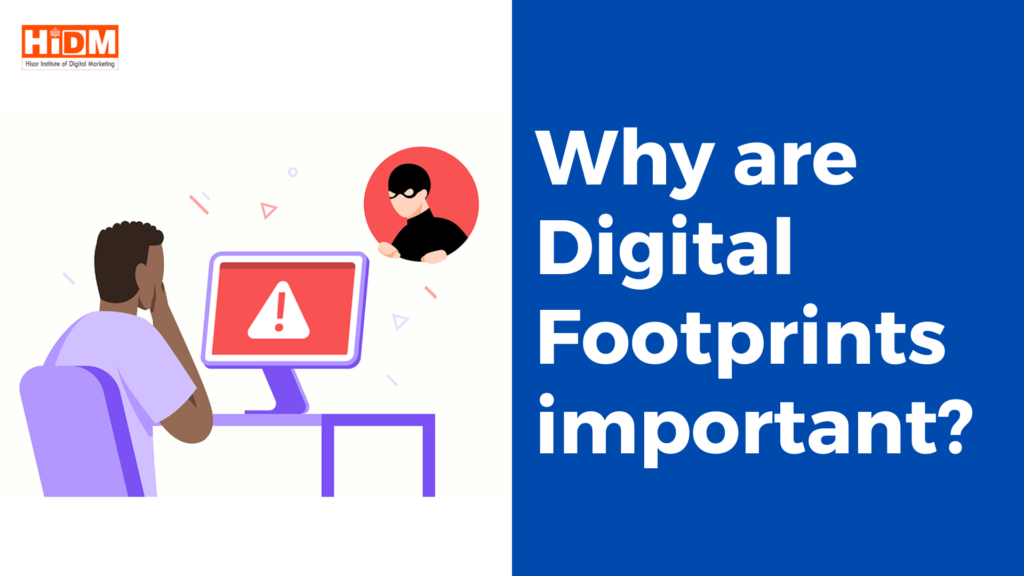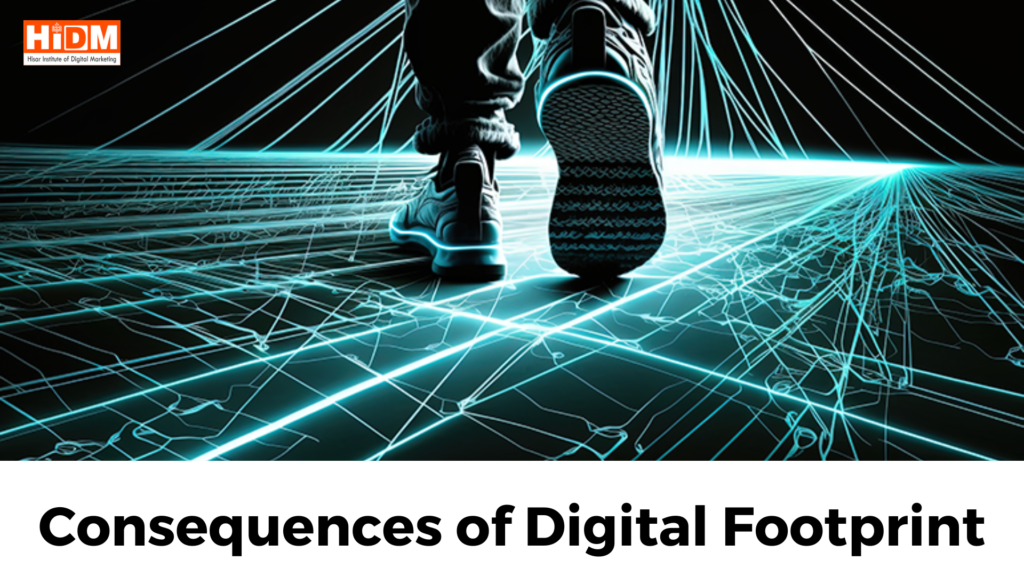Digital Footprint is the record of online activity that you have done on the internet. A digital footprint shows in various ways like data you have shared; shopping online; posting on social media; creating an account; registering for a newsletter; downloading something; like, commenting and sharing anything, clicking on any advertisement, applying for any job and many more. Almost every online activity leaves some type of digital footprint.The more information you keep online, the bigger your digital footprint is shown.
Digital Footprint Statistics

- On an average users spend 6 hours per day on the internet.
- At least 60% of the global population uses the internet.
- On an average 7.6 users are active on social media accounts.
- 98% of cybercriminals create a new email account while using stolen card details.
- 50% employers reject their candidates based on their social media profile.
- 85% of countries have laws and regulations for data protection.
Why are Digital Footprints important?

- Digital Footprint can reveal your personal information like location, interest and many more. If your personal information is gone into the wrong hands then cybercriminals carry out theft, scam and other harmful activity.
- Digital footprint can influence future opportunities such as job offers, collaborations and partnerships. A well-managed digital footprint can create a positive impression and enhance your chances of success.
- Digital footprint represents your online reputation. Employers, colleagues and clients often search for information about individuals online. A positive digital footprint shows your achievements, skills, and professionalism and also enhances your reputation and opens up opportunities.
- Digital footprints contribute to personal branding which promote you online. Your activities, posts, and interactions on social media platforms, blogs all show how you are perceived by others. By managing your digital footprint effectively, you can present yourself in a way that aligns with your personal and professional goals.
Examples of Digital Footprints:-
- While using Internet Banking
- Social Post
- Phone Calls
- Credit Cards Numbers
- Password & login information
- Online shopping
- Search History
- Registering for newsletter
- Create an account
- Downloading any apps
- Email addresses
- Fitness trackers
- History
- Subscriptions
- Connecting with friends
- Online Forums
Types of Digital Footprint

- Active Digital Footprints – When you share any information by your choice like posting on social media, commenting on any post, review on any product, sign up for a newsletter it is known as active digital footprint. In this users are also aware of digital traces because they shared that information.
- Passive Digital Footprints – When you don’t share any information and data is collected without your consent, it is called passive digital footprint. When information is tracked by your activity on search queries, Online shopping sites etc and collect your information without your permission forms passive digital footprints.
Consequences of Digital Footprint

- Hacking – A hacker takes information from a digital footprint to do misuse. They exposed username, passwords, email address and user accounts.
- Online Reputation – Think before posting because if the employer sees the social media post that post is unethical then the employer does not hire the person.
- Access Control – If users provide information online then hackers get access to different applications. For example Log in to bank accounts.
How can you control your footprints?

- Delete old Social media accounts – If you don’t use your account anymore, then delete your account with the platform or contact the company directly after deletion the account and ask them to remove any records they still hold.
- Keep your password private – Password manager should be used to store your password and create your unique and complex password.
- Adjust your Privacy Settings – Don’t share your personal information on social media like Facebook, Instagram and snapchat. Set your privacy setting according to your preference.
- Use a VPN (Virtual Private Network) – VPN hides your IP address from a third party server. VPN makes it impossible for anyone to find your physical location. It reduces the risk of website tracking and data collection.
- Disabled location tracking – Don’t open your location on your searches for businesses in your area. It is risky if your location is open all the time.
- Avoid Oversharing – Avoid oversharing information on social media such as Phone Number, House Number and many more.
- Make a strong Password – Password should be strong. The password must include digits, numbers, symbols. Don’t include personal information like names, family members name, birth date, anniversary date .
- Always update your software – Keep your antivirus updated to get security patches and remove bugs in your system. If your software is not updated then it gives hackers an opportunity for accessing your private information.
- Delete old EMail Accounts – If an email account is in no longer in use, then delete it. If hackers got an access to an Email account they can view your contacts and search your personal information. So delete the old Email accounts.
- Unsubscribe from mailing list – If you provide your email for coupons and discounts and get unwanted emails from those companies, then unsubscribe your mailing list.
Conclusion
On the internet, a digital footprint word is used to describe the traces or footprints that people leave online. You could manage your digital footprint by using privacy settings. A positive digital presence helps us in building a good reputation. Erasing and managing digital footprints can help us in improving our reputation.

